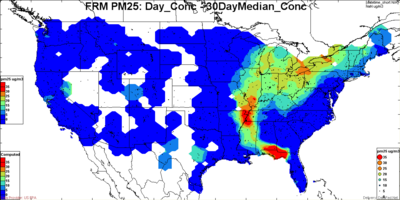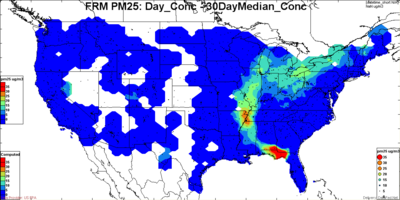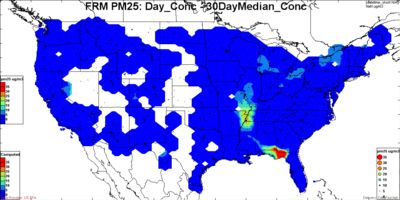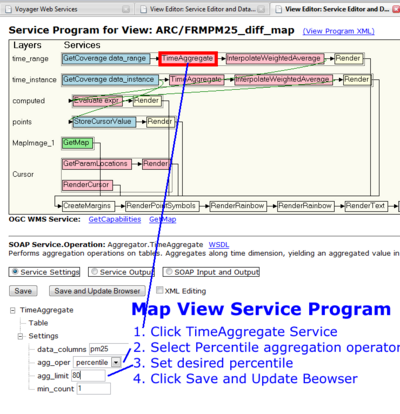Help:Using the Concentration Anomaly Tool
- Explain time window width setting. A useful measure of the "normal" concentration is the 84th percentile (+1 sigma) for a given station. A concentration anomaly is a deviation from the normal. This tool permits the calculation of concentration anomalies. In the illustration below, a time windows of +/- 15 days (one month window) was chosen. This period is longer than a typical exceptional event, but it is sufficiently short to preserve seasonality. In order to establish the normal values the concentrations can be averaged over multiple years for the given time window measured in Julian days, i.e. days between 160 and 190. Hence, a particular sample is considered anomolously high (deviates from the normal) if its value are substantially higher than the 84th percentile of the multi-year measurements for that "month" of the year. See Help:Using the Concentration Anomaly Tool to learn how to change these parameters.
The time parameters of the Concentration Anomaly Tool can be adjusted, changing: (1) the event day, (2) time window and (3) the time range that the time window is averaged over.
There is also need for flexibility in defining the 'normal' when calculating the deviation above normal. For example in figures below, the excess concentration is plotted based on 'normal' defined as the 50th, 84th (+ sigma) and 95th percentile of the distribution. Clearly, on a given day, the excess above the 95th percentile is much smaller than excess above the 50th percentile.
The anomaly calculation parameters of the Concentration Anomaly Tool can also be adjusted, changing: (1) the percentile that is defined as "normal" and (2) the calculation to find the difference from normal.
Normal and Exceptional Pattern Analysis Tool
The pattern of air air pollution pattern varies in space, time and also depends on the pollutants. In case of PM, it also depends on the species in the PM chemical mix. The sulfate pattern, for example, is very different from nitrate, organics or dust. An event being exceptional, requires the it deviates from the "normal", but what is normal?




